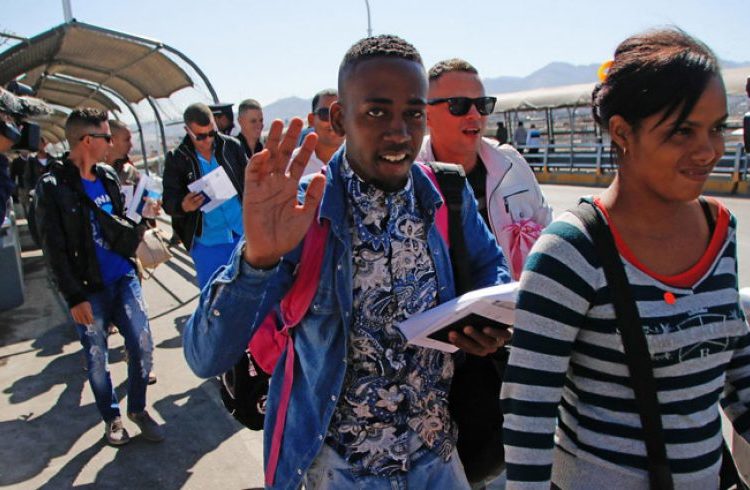If you live in Cuba and feel that increasingly more relatives, friends and acquaintances are leaving the country, your assessment is right. Statistics back your opinion. According to a report of the Field Operations Office of the U.S. Customs and Border Protection, 50,082 Cubans arrived in the North American nation in the fiscal year of 2016 (Sept. 30, 2015 to Sept. 30, 2016), a figure 17.2 percent higher than the previous period.
During the fiscal year of 2015, 40,155 Cubans arrived in the United States. They were almost double the 24,278 who arrived in 2014, and much more than the 13,000 who arrived in 2013 and 12,000 in 2012. In short, more than 139,000 Cubans have arrived through illegal means to U.S. borders between 2012 and 2016.
The flow of persons to the U.S. this year was tinged by the crisis in Central America, when the government of Nicaragua decided to close in November 2015 the south border of its territory. Even so, the Costa Rican and Panamanian authorities arranged for the sending of thousands of Cubans to El Salvador and Mexico, where they were able to continue their journey.
A series of factors, regulatory as well as subjective, have favored the recent sustained increase in Cuban emigration.
The updating of the migration policy on the island, implemented in January 2014, facilitated the increase of exits from the country. However, the prerogative that allows Cubans to remain two years outside national territory and not lose their permanent residence has deformed the real statistics of the phenomenon.
According to the National Bureau of Statistics and Information (ONEI), the migration total was positive for Cuba between 2013 and 2014, with values of 3,302 and 1,922, respectively. This is so because the dozens of thousands of persons who have left the island during the last 24 months have not been taken into account; or those who in a sort of presence in the distance visit it for a few days and then return to the country where they carry out their lives.
The reestablishment of relations between Cuba and the United States also seems to be a factor that has an influence. The fear of the eradication of the Cuban Adjustment Act, which offers privileges to emigrants from the island, is obvious, especially when around 80% of the arrivals – some 38,000 – had recourse to the “wet feet dry feet” policy during this period. The majority crossed the border with Mexico through Laredo (31,965), El Paso (4,911) and San Diego (1,434).
One of the most dangerous means to get to the U.S., crossing the sea on rustic vessels, also showed a hike in 2016. Perhaps the fear of the modification of the regulatory framework favoring Cuban emigration to the United States and the new difficulties experienced in Central America drove many to take this risky decision.
According to the report by the Field Operations Office of the U.S. Customs and Border Protection, quoted by several media, 7,358 rafters arrived to U.S. coasts during this fiscal year. With respect to the previous report (4,473) it represents an increase of more than 65%.
The critically negative migratory total (contrary to what the official statistics indicate) represents a serious problem for Cuban society. In a demographic dynamics that has a tendency toward aging, the phenomenon can acquire dramatic elements.
If the current tendency were to continue, how will Cuba be in the next 20 years? Which is the alternative or policy to put a stop to the flow, mainly comprising educated young people? While a solution comes up, the nation becomes little by little more dispersed throughout the map of the world.










